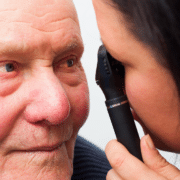Cataracts: Diagnosis and Treatment
Have you ever wondered how cataracts are diagnosed and treated? It’s a question many of us may one day face as we get older, or even sooner if we’re concerned about the eye health of our loved ones. Why is this important? Well, for starters, understanding the process can help you take control of your eye health and make informed decisions should you ever find yourself confronted with this restrictive condition. So, to begin with… how is a cataract diagnosed and treated?
Cataracts are diagnosed through a comprehensive eye exam, which includes tests to measure visual acuity and assess the clarity of your lens. The treatment primarily involves cataract surgery, where the cloudy lens is replaced with a clear artificial lens. In the United States, over 3 million cataract surgeries are performed annually, with a 98% success rate.
What Happens During a Comprehensive Eye Exam?
During a comprehensive eye exam, your optometrist or ophthalmologist will assess your vision, looking for signs of cataracts. They’ll perform visual acuity tests to determine how well you can see at various distances. If you’re over 60, this exam is recommended every year, as cataracts become more common with age. If they detect a cataract or any other issues, they’ll discuss potential treatment options with you, and this is when the journey towards clearer vision begins.
This eye exam will include a visual field test to check your peripheral vision, and tonometry, a test to measure intraocular pressure— crucial in monitoring conditions like glaucoma. Your pupils may be dilated for a more detailed look at your lens, and your doctor will examine the lens’s clarity, looking for signs of cataracts.
What Is Cataract Surgery Like?
Cataract surgery is one of the most common and successful medical procedures performed today. It’s generally an outpatient surgery, meaning you won’t have to stay overnight in a hospital. Before the surgery, your eye will be numbed with anesthesia, and you might be given a mild sedative to help you relax.
During the procedure, a tiny incision is made in your eye, and the cloudy lens is broken up and removed. Then, a clear artificial lens, known as an intraocular lens (IOL), is inserted. The whole process is quick, usually taking less than 30 minutes. You won’t feel any pain, just some minor pressure or discomfort.
But the best part? Cataract surgery typically has a quick recovery. Many people notice improved vision within a day or two, and you’ll be able to return to your regular activities soon after. It’s a remarkable transformation – from cloudy vision to clear sight.
Are There Risks or Complications in Cataract Surgery?
While cataract surgery is generally safe and highly successful, like any medical procedure, there are some risks and potential complications. It’s important to be aware of these before undergoing surgery.
Some common risks include infection, bleeding, swelling, and retinal detachment. Your eye care professional will discuss these with you and take steps to minimize them. Complications are rare, but it’s crucial to follow post-operative instructions carefully to ensure a smooth recovery.
Preparing for cataract surgery involves a few steps, such as discontinuing certain medications and avoiding eating or drinking before the surgery. You’ll also need someone to drive you to and from the surgical center, as you won’t be able to drive immediately afterward.
What Can You Expect After Cataract Surgery?
After the procedure, you’ll receive detailed instructions from your eye care professional. You may need to use prescription eye drops and protect your eyes from bright lights. Most people experience improved vision quickly, but it might take a few weeks for your eyes to fully adjust.
The great news is that cataract surgery can dramatically enhance your quality of life. You’ll enjoy clearer vision, sharper colors, and the ability to see the world more vividly. Many people no longer need glasses for distance vision, although reading glasses may still be necessary for close-up tasks.
So, understanding what to expect after cataract surgery is the final piece of the puzzle. It’s all about embracing your newfound clarity and seeing the world with fresh eyes.
In conclusion, the journey from cataract diagnosis through surgery and recovery need not be a scary experience. Armed with this knowledge, you’re now prepared to take control of your eye health and embark on a path to improved vision. Whether you’re facing cataracts yourself or supporting a loved one through this process, remember that clear sight is on the horizon.
Now that you’ve learned how cataracts are diagnosed and treated, one proactive step you can take is to schedule a comprehensive eye exam, especially if you’re over 60. Annual check-ups can help catch cataracts and other eye conditions early, enabling timely intervention and a wider array of preemptive care options. Don’t wait – contact your eye care professional and prioritize your vision today.
Your partners at Kirman Eye are passionately dedicated to providing our patients with the best and most effective eye-care options available when anticipating all of your optical needs.
Contact us to work with you today!





